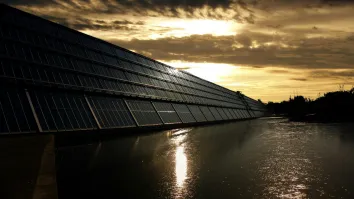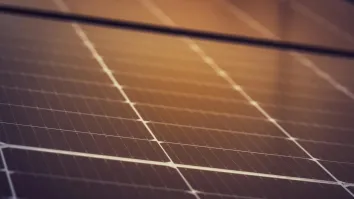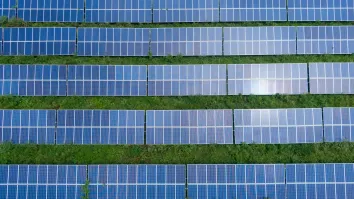Power projects in Indonesia you should know about
By Shamim Razavi and Bintang HidayantoBased on even the most conservative estimates of Indonesian growth, demand for power in the already under-supplied archipelago will grow by 7% each year for the foreseeable future. While this would appear to make for a guaranteed return on new investment, systemic difficulties remain.
Indonesia, land of seemingly endless potential, is often limited by a paucity of infrastructure. This means roads, ports, airports and – underpinning them all – power. Current supply struggles to keep pace with demand, a demand which looks set to grow steadily, at a pace which outstrips new supply, in the coming years.
At some point, the divergence between supply and demand will become a barrier to the development of the country’s potential more generally and it is with this in mind that the government seeks to encourage investment in the power generation sector across the archipelago.
In Indonesia, a country rich in fossil fuels, power generation has historically been coal-fired, with gas-fuelled power capacity running at a third of that of coal, and renewable (hydro and geothermal) collectively matching the output generated by gas. While there is a political drive for greater use of renewable sources, the current pipeline for power stations being built or planned is predominately coal-fired – driven in large part by falling coal prices.
Mine-mouth
A growing trend in the Indonesian market is for mine-mouth power generation. A uniquely Indonesian twist on such projects is inevitable, with uncertainty as to how the obligation for miners to sell a portion of their output to specified domestic purchasers potentially leading to uncertainty over the supply of coal feedstock. Similarly, the government’s imposition of a minimum price for the sale of coal, adjusted monthly, creates further uncertainty.
Such worries – which undermine the very certainty which makes mine-mouth projects so attractive – are not unknown to the Indonesian government, and it is heartening that regulations targeted at addressing these and other questions specific to mine-mouth production are expected soon.
Fast Track and PPP
The Indonesian government’s desire to create investor certainty in this key area –reflecting the importance placed on power demands at the national level –has led the Ministry of Finance to offer business viability guarantee letters (BVGLs) for power projects under its Fast Track scheme, which is now in Phase II. These BVGLs, which are available until the end of 2014, effectively support and underwrite the obligation of national power company PLN to purchase power generated at agreed prices – rendering the projects eminently bankable.
The guarantees are particularly important in light of the subsidised tariff at which power is supplied to the public, leaving PLN vulnerable to governmental budgetary constraints. They are unparalleled in other sectors of the Indonesian economy, and have done much to ease concerns. The current Fast Track II project pipeline envisages an additional 17,000 MW of capacity being accelerated into operation in the coming years.
Alongside Fast Track II, a limited number of projects have been promoted as Public Private Partnership (PPP) projects in the energy development sector. The first, and most notable, was the development of the Central Java Power Project, a 2,000 MW ultra-super critical coal plant. Several other PPP projects are currently under tender or in the early stage of development, including the Karama 450 MW hydropower plant, the Jambi 800 MW plant, and Boropalu geothermal.
PPP projects do not receive BVGLs. Instead, they attract guarantees from the Indonesia Infrastructure Guarantee Fund (IIGF). These guarantees are more limited – in the case of Central Java, the guarantee was for US$ 33 million while the entire project cost around US$ 4 billion. However, the Ministry of Finance has also been willing to provide a secondary guarantee. In any event, the IIGF’s involvement in these projects provides useful close scrutiny to the process, and so improves the projects’ overall bankability.
Foreign Ownership
The importance of power production to the national economy is also reflected in the openness of the sector to foreign investment. While Indonesia restricts foreign investment and ownership where it deems this expedient and where local capacity can meet demand, power production is one sector in which up to 95% of any project with a capacity in excess of 10 MW can be held by foreign parties.
While local content requirements set targets for the use of Indonesian goods and services in the construction and operation of power projects, these requirements may be waived if it can be shown that local capacity is insufficient.
Land Issues
Despite all of this willingness, obstacles remain. Land acquisition can be a long and drawn out process. While the 2011 Land Acquisition Law provides some certainty regarding compulsory acquisition, it is only applicable to state-owned projects, and in any event still entails a two-year process. Indeed, for the most part, land is acquired for privately-owned projects, and issues typically arise not from a lack of willingness among land owners to sell, but from too many sellers – often multiple individuals claiming the right to sell a single piece of land.
The majority of land in Indonesia is held on a girik or unregistered title basis, with scant evidence of ownership available. This is particularly the case in undeveloped areas, where such projects are often sited. Competing claims of ownership, and community objections, are not uncommon and in many cases resolving the land questions are some of the most taxing and time-consuming aspects of a project – longer even than the construction process.
This is despite government efforts to facilitate matters, including an explicit exemption for geothermal and power projects from the moratorium on the use of primary forest and peat land.
Future Trends
With these difficulties in mind, and with an eye on its commitment to reducing greenhouse gas emissions, the Indonesian government has been encouraging the use of other energy sources – geothermal, hydro and biomass are already in active use, and solar and wind projects are also beginning to find commercial application. This government support has included fiscal incentives and, crucially, an enhanced feed-in tariff for power generated from renewable sources.
These tariffs, which were raised substantially in mid 2013, will doubtless change the economics of the renewables industry in Indonesia – particularly in respect of geothermal drilling. The huge geothermal potential is yet to be fully captured in a country with a unique geology giving it access to 40% of the world’s geothermal resources.
Less environmentally friendly, but with similar prospects, is the potential for growth in gas-fuelled projects in the region. The shale gas revolution has yet to fully take hold in Indonesia, stymied by a lack of certainty in the legal framework for unconventional hydrocarbons, but the possibility of significant gas production – and the cheaper power that usually goes with it – remains an important consideration for the Indonesian market.
[1] The author wrote some of this article on his laptop during a power cut in Central Jakarta on 2 October 2013.




















 Advertise
Advertise






